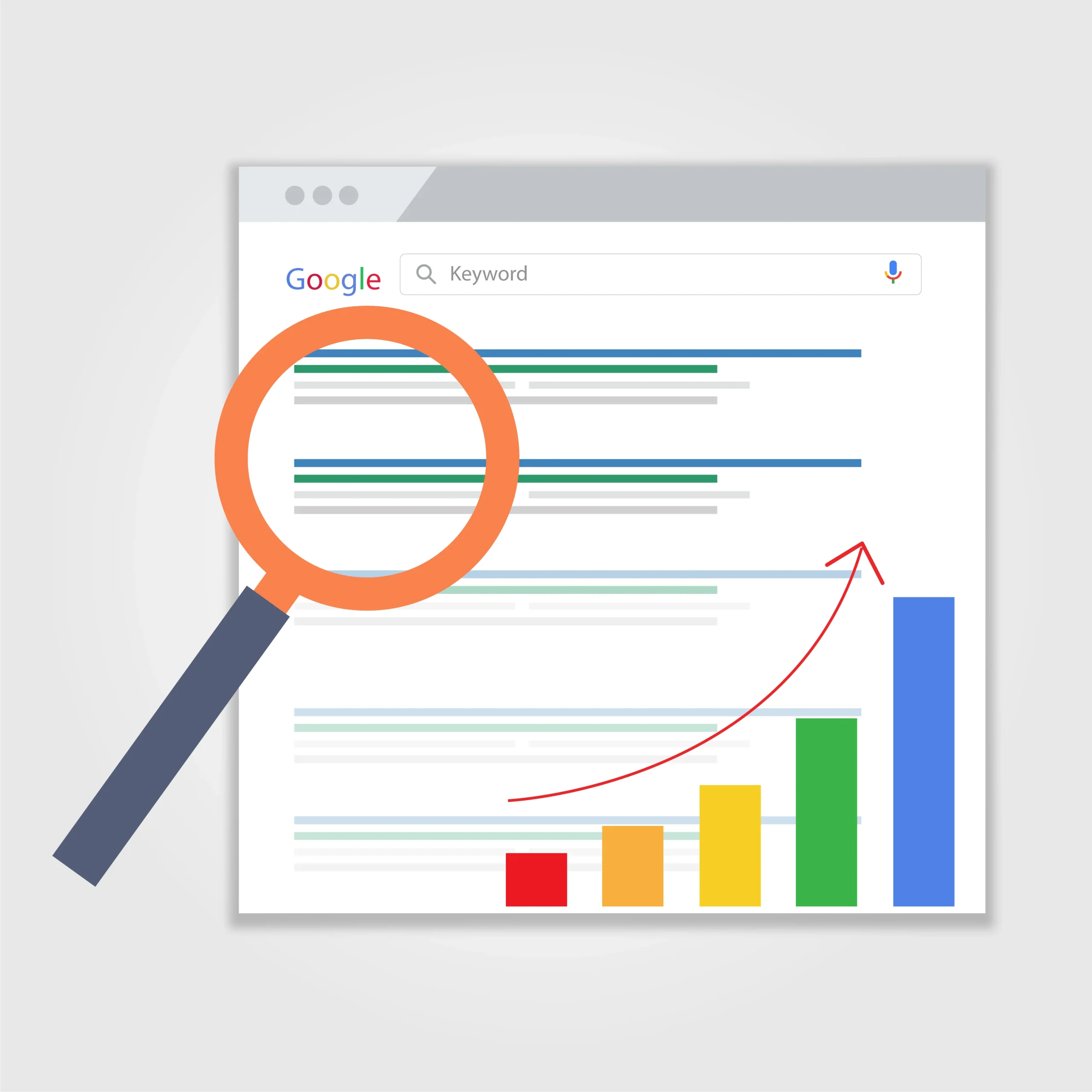Keyword intent is one of the most critical aspects of SEO. Understanding why a user searches for a term helps businesses align their content strategy with audience needs, improve search rankings, and increase organic traffic and conversions.
This guide will explain:
✔ Types of keyword intent (navigational, informational, commercial, and transactional)
✔ How intent-driven SEO improves content strategy
✔ Techniques to optimise content for different search intents
✔ Common mistakes and best practices
What is Keyword Intent and Why Does It Matter?
Keyword intent, or search intent, refers to the reason behind a search query. Google prioritises content that matches user intent instead of simply focusing on keyword presence.
For example:
✔ “How to file business taxes” – Informational intent (user is researching for guides relating to business tax. From the query it is evident that people are not finding a tax expert for hiring).
✔ “Hire an accountant for tax returns” – Transactional intent (user is ready to take action. Visitors are looking for an accountant to file their tax returns).

Table of Contents
Why is Keyword Intent Important for SEO?
Identifying and addressing the accurate intent-driven keywords helps a website to target their audience with appropriate information. It affects the lower bounce rate that sends a trust & relevance signal to the search engine.
In summary, identifying the right intent will:
✔ Attracts the right audience – Ensures traffic consists of potential customers.
✔ Improves click-through rates (CTR) – Users are more likely to click relevant results.
✔ Increases conversion rates – Aligning intent with the user’s stage in the buying journey improves leads and sales.
For example, a law firm ranking for “best corporate solicitors in London” is likely to generate more client inquiries than one ranking for “what does a corporate solicitor do?”, which mostly attracts users looking for general information. However, a solicitor should target informational intent keywords that help to appear in front of the visitors and offers chances of converting the visitors as into customers.

How Does Keyword Intent Affect Google RankBrain?
Google uses RankBrain to determine rankability of any website. Google’s RankBrain algorithm refines search results based on user intent signals such as:
✔ Click-through rate (CTR) – How many users click a search result?
✔ Dwell time – How long do users stay on a page before bouncing back to search results?
✔ Engagement signals – Do users scroll, interact, or leave quickly?
We have also seen that Google patents focus on keyword intents that directly impact the website’s overall rank. Below are some Google algorithm patents that refers to the search intent.
- US7974976B2 (2011): Interprets query words to determine search intent.
- US8868548B2 (2014): Uses user behavior patterns to refine search results.
- US9286757B2 (2016): Predicts intent based on past searches.
Prominent semantic SEO expert, Koray Tugberk (founder of Holistic SEO) also suggests that a website content needs to be intent driven, focused, organised and targeted to the central entity (core expertise or, core service) so that search engine can start valuing the content with the belief that the content will serve users’ intent immediately.

Google’s Helpful Content Update and Search Intent
Google prioritises content that fully satisfies user intent rather than content that simply includes keywords. This update means that:
✔ Pages that fail to meet search expectations will see lower rankings.
✔ Helpful, well-structured content ranks higher and retains traffic better.
✔ Users who find answers quickly and efficiently are more likely to convert.
How does Keyword intent impact website traffic?
Keyword intent directly affects traffic quality and volume by ensuring searchers find exactly what they need. Websites optimised for search intent variations attract higher engagement, lower bounce rates, and better conversions.
By organising content hierarchically, your website signals to search engines that it can serve multiple user queries efficiently, increasing engagement, dwell time, and conversions.
How to Structure Keywords Based on Intent & Traffic Volume:
✔ Identify High-Traffic Intent-Driven Keywords – Research search volume and user demand across different intent types.
✔ Turn Keywords into Headings – Use primary search terms as H1/H2 headings for better relevance.
✔ Use Subheadings to Address Intent Variations – Ensure content covers all angles, improving topical authority.
✔ Optimise for Quick Answers – Prioritise clarity and direct responses to match user intent faster than competitors.
Here’s a keyword research checklist that will help implementing search intents in a better way.
What Are the Different Types of Keyword Intent?
There are four main types of search intent. Informational, Navigational, Transactional & Commercial. Here we explain these four search intent types with examples.
Navigational Intent – How Do Users Search for Specific Websites?
Users with navigational intent are searching for a particular brand, website, or product page. They are not looking for new options but rather a direct way to reach a known destination.
For example, navigational search intents of an accountant are:
✔ “Xero login page”
✔ “PwC tax advisory services”
✔ “Baker McKenzie contact number”
How to Optimise for Navigational Intent?
To target navigational traffic, a website need to establish brand connection through Google My Business (GMB), brand signals and using structured data to establish semantic entity relationship.
✔ Ensure brand SERPs display correct business details.
✔ Optimise Google Business Profile for branded searches.
✔ Use structured data and sitelinks to make navigation easier.
Informational Intent – How Can You Rank for Research-Based Queries?
Users with informational intent are looking for answers, guides, or educational content. They are not yet ready to buy but are exploring options. Best way to target informational search query is to publish quality blogs that educates visitors on their different related queries. A tax firm can create a guide on tax-saving strategies for small businesses, attracting users in the research phase.
For example, informational search intent of accountants would be:
✔ “How does inheritance tax work?”
✔ “What is forensic accounting?”
✔ “How to start an e-commerce business?”
How to Optimise for Informational Intent?
✔ Write detailed blog posts and how-to guides.
✔ Use FAQs and schema markup for featured snippets.
✔ Include internal links to commercial or transactional pages.

Commercial Intent – How Do Users Compare Products or Services?
Users with commercial intent are researching which product or service is best before making a final decision. It means, visitors are partially aware of the information but are seeking help from a website to contribute in the decision-making process.
Examples:
✔ “Best payroll software for small businesses”
✔ “Top law firms for real estate disputes”
✔ “Xero vs QuickBooks for accountants”
How to Optimise for Commercial Intent?
✔ Create comparison pages and expert reviews.
✔ Include case studies, testimonials, and social proof.
✔ Provide free trials, consultations, or lead magnets.A law firm targeting “Best Family Lawyers in Manchester” can create a comparison page with case studies, client reviews, and pricing breakdowns.
Transactional Intent – How Do Users Search When Ready to Take Action?
Users with transactional intent have made their decision and want to purchase, book, or sign up. At the transactional query stage, giving plenty of information would not serve visitors query. Transactional query visitors are specifically looking for a service. Still, a website can optimise transactional queries to convert the visitors into a different service funnel.
For example, transactional query for an accounting firm would be:
✔ “Hire an accountant for tax returns”
✔ “Book a consultation with a business lawyer”
✔ “Buy SEO services for e-commerce stores”
How to Optimise for Transactional Intent?
✔ Create conversion-optimised landing pages with strong CTAs.
✔ Ensure pages load fast and are mobile-friendly.
✔ Use structured data to improve search visibility.
How to allocate different keyword intent to a website?
A website needs to equally focus on all types of keyword intents. Targeting different types of search intent helps with having traffic from different stages and achieving topical authority by offering semantically connected information.
Here are three simple steps to optimise a website with different search intent keywords:
- Target Pages with navigational and transaction intent.
- Optimise blog posts for the informational & commercial intent keywords & place a CTA to send visitors into the pages.
The main idea is to ensure that your website becomes an effective funnel to grow a visitor from the informative stage to the commercial stage by navigating the visitor from one post to another. Effective internal linking strategy and a Call to Action button is crucial.
Tools That Help in Finding Keyword Intent
The following tools such as Google, SEMrush, Answer The Public, help analyse search intent, extract competitor insights, and identify high-value keyword opportunities
Google Search (Autofill, People Also Ask, Manual SERP Analysis)
Google itself is a powerful intent discovery tool. By analysing its search features, you can determine how users phrase their queries and what they expect in response:
✔ Autofill Suggestions – When typing a keyword, Google suggests popular variations, revealing what users frequently search. For example, typing “best accounting software” may show “best accounting software for small businesses”, indicating commercial intent. For more: here’s our Top Accounting Firm’s keywords.
✔ People Also Ask (PAA) – These are Google’s real-time user follow-up queries. Ranking for PAA improves visibility and helps understand what additional information users need.
✔ Manual SERP Analysis – Studying top-ranking pages shows how competitors structure content, what keywords they use, and how they optimise for search intent. For example, if all results for “business tax planning” are guides rather than service pages, it signals an informational intent.

Google Search Console (GSC) – Identify Ranking & High-Impression Keywords
GSC provides direct insight into how Google sees your website. Key features include:
✔ Already Ranked Keywords – Pages that rank but don’t bring much traffic may need better intent alignment (e.g., optimising service pages for transactional queries).
✔ High-Impression, Low-CTR Queries – If a keyword has thousands of impressions but low clicks, it may need a stronger meta title, better snippet optimisation, or a clearer search intent match.
✔ Click Distribution by Device – Analysing mobile vs desktop performance helps in refining user experience and content delivery.
SEMrush – Competitive Research & Intent Classification
SEMrush is an advanced keyword research tool that provides:
✔ Keyword Intent Classification – Automatically labels keywords as informational, navigational, commercial, or transactional.
✔ Competitive Keyword Gap Analysis – Finds keywords your competitors rank for but you don’t, uncovering ranking opportunities.
✔ SERP Feature Analysis – Identifies whether a keyword ranks for featured snippets, local packs, or video results, helping align content formats with search intent.
✔ Keyword Difficulty & CPC Data – Helps prioritise high-opportunity keywords that balance search volume, competition, and business value.
Answer the Public – User Question & Content Ideation Tool
Answer the Public is useful to differentiate a particular query. This tool provides real-time user-generated queries, helping refine content ideas and optimise for conversational searches:
✔ Question-Based Keywords – Identifies how, why, what, and where queries for deeper topic coverage.
✔ Comparison & Preposition Keywords – Finds queries like “Xero vs QuickBooks” or “best payroll software for freelancers”, useful for commercial and transactional intent.
✔ Content Structuring for SEO – Helps format blog posts for rich snippets and featured snippets by incorporating common search queries.

How to Use ChatGPT to Explore Keyword Intent and Create SEO-Optimised Content
ChatGPT can be used to extract different variations of the keywords and different perspectives of the users associated to each search query. Identifying search perspective will help you to address the intent in your content that maximises the chances of getting featured in rich answer snippet. Also, enriching your content from variations of search query from different angles will help finding a maximum number of intents (related to a broad keyword topic), which helps getting considered as a Helpful Content as per the Google’s Helpful Content Guideline.
How to Ask ChatGPT to Explore Variations of a Keyword?
Simply ask ChatGPT to give you 50 variations of a keyword, keyword phrase or a search query.
For example,the below query will help you to examine how people search for accountant.
“Generate keyword variations for ‘best business accountant’ based on different search intents.”
How to Ask ChatGPT to Explore Different Perspectives of a Keyword?
Ask ChatGPT to explore 100 different situations/perspectives that directly or indirectly motivate/influence a visitor to look for a particular query.
For example, ChatGPT can help extract different perception of people searching for small business accountant.
“What are different user perspectives for the keyword ‘best tax accountant for small businesses’? Get me 100 different situation that influence people to look for an accountant”
How to Ask ChatGPT to Generate Semantically Relevant Entities for Content Planning?
By adding semantically relevant topics or entities, it makes the content helpful and trustworthy. You may aks ChatGPT to design a content which is smenatically rich with different topical entity.
“List semantically relevant entities for the keyword ‘business tax planning’ to create a content outline.”
How to Ask ChatGPT to Ensure Content First Addresses Search Intent
Google and visitors prefer a content that immediately address users intent in first two lines (for each heading and sub-headings).
You can seek help of ChatGPT to immediately answer the search query by reducing bluff and non-value adding information in a paragraph.
“Write an SEO-optimised introduction for ‘How to reduce small business taxes’ that immediately answers user intent.”
Common Mistakes in Keyword Intent Optimisation (and How to Avoid Them)
Many websites fail to align content with search intent, resulting in low rankings, poor engagement, and missed conversion opportunities. Here are the most common mistakes in keyword intent optimisation and how to fix them.
Targeting Informational Keywords with Service Pages
Many businesses try to rank service pages for research-based queries, leading to high bounce rates. Users searching for “How does corporate tax work?” want informational content, not a service page.
✔ Solution: Create educational blog posts for informational intent and use internal linking to guide users to service pages.
Ignoring Google’s SERP Analysis
Failing to analyse top-ranking content types results in misaligned content. If all top results for “Best payroll software for small businesses” are comparison pages, a product page won’t rank.
✔ Solution: Study Google’s SERP results to match content format and search intent before creating content.
Not Optimising Local SEO for Transactional Queries
Local businesses often ignore Google Business Profile, citations, and geo-specific content, missing high-intent searches like “Hire a business accountant near me.”
✔ Solution: Optimise Google Business Profile, location pages, and local citations to capture transactional intent.
Using Thin Content That Fails to Provide Value
Google ranks comprehensive, authoritative content over shallow, keyword-stuffed pages.
✔ Solution: Ensure content fully answers user queries, includes supporting data, and follows semantic SEO principles.
How to Continuously Improve Keyword Intent Strategy?
SEO is an ongoing process, and keyword intent strategy must evolve with search trends, user behavior, and Google algorithm updates. To stay ahead of competitors and maintain rankings, businesses must continuously refine their keyword targeting and content strategy.
Track Rankings and Conversions to Refine Strategy
Simply ranking for a keyword isn’t enough—you need to measure its impact on traffic and conversions. If a high-ranking page doesn’t generate leads, the intent may be misaligned.
Use Google Search Console and analytics tools to track keyword performance, CTR, and conversion rates. Optimise underperforming pages by adjusting CTAs or refining content structure.
Analyse Bounce Rates to Determine User Satisfaction
A high bounce rate often signals mismatched search intent. If users land on your page and leave immediately, it means content doesn’t meet their expectations.
Identify pages with high bounce rates and rewrite content to match user intent more accurately.
A/B Test Headlines, CTAs, and Page Layouts
Even small tweaks in headlines, call-to-actions (CTAs), and layouts can impact engagement.
Run A/B tests to see which headlines attract more clicks and which CTAs convert better.
How to Find Buying Intent Keywords?
Buying intent keywords indicate that a user is ready to make a purchase or take action. These keywords often include terms like “buy,” “hire,” “best price,” “discount,” or “near me.” To find them:
✔ Use Google Autocomplete & People Also Ask to identify commercial and transactional phrases.
✔ Analyse Google Ads CPC data—higher CPC often indicates high buying intent.
✔ Use SEMrush, Ahrefs, or Google Search Console to find keywords that drive conversions.
✔ Check competitor landing pages to see which transactional keywords they optimise for.
What Does It Mean by Having High Intent?
High intent means that a user’s search query signals a strong likelihood of taking action, such as buying a product, booking a service, or requesting a quote. High-intent keywords fall into commercial and transactional categories.
✔ Examples of high-intent searches: “Best tax accountant near me,” “Buy luxury watches online,” “Schedule a legal consultation.”
✔ These keywords often lead directly to conversions and have higher competition in paid ads.
✔ Optimising content for high-intent keywords improves lead generation and revenue.
How to Build an Intent-Driven Topical Map?
An intent-driven topical map structures content around user intent, ensuring better rankings and topical authority. To build one:
✔ Identify core topics relevant to your niche and categorise them by search intent (informational, commercial, transactional).
✔ Map out supporting content—pillar pages, subtopics, FAQs—to cover all related queries.
✔ Analyse competitors’ content structure to fill gaps and improve content depth.
✔ Use internal linking strategically to guide users from informational to transactional pages.
✔ Leverage Google NLP and entity-based optimisation to create a well-connected semantic structure.
How to Get Featured in Google Rich Answer Snippets for Targeted Keywords?
To get featured in a Google rich answer snippet, content must be concise, structured, and directly answer user queries.
✔ Use question-based headings (H2, H3) that match user queries.
✔ Provide direct, to-the-point answers in the first 1-2 sentences before expanding.
✔ Use bullet points, lists, or tables to improve snippet chances.
✔ Implement FAQ schema markup to increase visibility in People Also Ask results.
✔ Optimise for featured snippets by structuring content using NLP-friendly formatting (definitions, comparisons, step-by-step guides).
Final Thoughts
Understanding keyword intent improves rankings, traffic, and conversions. Aligning content with navigational, informational, commercial, and transactional searches helps attract the right audience. Businesses using intent-driven SEO and AI discovery strategies will outperform competitors and drive long-term growth.
SEO Opportunity – How Can UK Accountants Win the “Childcare Accountant” Niche?
You can win the “childcare accountant” niche with SEO because UK search demand is high, competition quality is low-to-medium, and…
Different Niches for Accountants in the UK: a data-led SEO playbook
Specialising in a tightly defined niche helps UK accountants win more qualified leads, rank for specific intent keywords, and close…
SEO for Financial Advisors: The Complete Guide to Ranking, Leads, and Trust
SEO matters for financial professionals because it tackles three challenges at once: visibility, credibility, and conversion.First, you need to…
To rank higher in AI-driven search engines and voice search results, you must optimise your website for voice search by…
Topical authority is your website’s perceived score assigned by the Search Engine. The term authority represents that your website holds…
How to use AI & ChatGPT for Article writing & blogging? 16 Effective Strategies
AI tools like ChatGPT are a must-have for bloggers and content creators. 63% of marketers now use AI for content…







